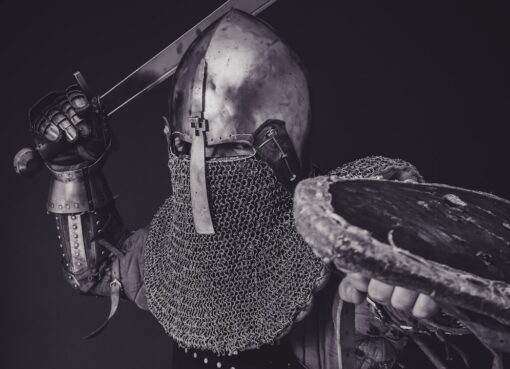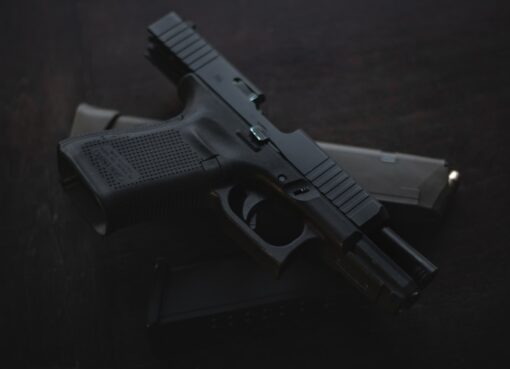Alaskan Husky vs Siberian Husky: A Comparison

The Siberian Husky is a breed of working dog that originated in northeastern Siberia, Russia. They were originally bred by the Chukchi people, an indigenous tribe, to pull sleds over long distances in the harsh Arctic conditions. The breed’s origins can be traced back over 3,000 years, making them one of the oldest dog breeds in existence. The Chukchi people relied on the Siberian Husky for transportation, as well as for hunting and guarding their camps. The breed’s ability to withstand extreme cold and their incredible endurance made them invaluable to the Chukchi people’s way of life.
In the early 20th century, Siberian Huskies were brought to Alaska to compete in sled dog races, known as the All-Alaska Sweepstakes. Their impressive speed and stamina quickly caught the attention of dog enthusiasts in the United States, and the breed gained popularity as a sled dog and a companion. In 1930, the American Kennel Club officially recognized the Siberian Husky as a breed. Today, Siberian Huskies are still used in sled dog racing and as working dogs in cold climates, but they have also become beloved family pets around the world.
The Siberian Husky’s rich history as a working dog is evident in their physical characteristics. They are a medium-sized breed with a strong and muscular build. Their double coat is thick and insulating, with a soft undercoat and a longer, coarser outer coat. Their coat comes in a variety of colors, including black, gray, red, and sable, often with striking facial markings. Their almond-shaped eyes can be blue, brown, or a combination of both, and their erect ears give them an alert and intelligent expression. The Siberian Husky’s tail is well-furred and carried over their back in a graceful curve. Their overall appearance is one of strength, agility, and endurance, reflecting their heritage as sled dogs in the harsh Arctic environment.
The Siberian Husky’s physical characteristics are a testament to their history as working dogs in the Arctic. Their thick double coat provides insulation against the cold, while their strong build and agile movements make them well-suited for pulling sleds over long distances. Their striking appearance, with piercing eyes and distinctive facial markings, sets them apart from other breeds. The Siberian Husky’s physical traits are a reflection of their heritage as hardworking and resilient dogs that have adapted to thrive in some of the harshest conditions on earth.
Key Takeaways
- Huskies originated from Siberia and were bred by the Chukchi people for sledding and companionship.
- They are medium-sized dogs with a thick double coat, erect ears, and distinctive markings.
- Huskies are known for their friendly and outgoing nature, but they can also be independent and stubborn.
- They require plenty of exercise and mental stimulation to prevent boredom and destructive behavior.
- Huskies are generally healthy dogs with a lifespan of 12-15 years, but they are prone to certain health issues such as hip dysplasia and eye problems.
Temperament and Behavior
Siberian Huskies are known for their friendly and outgoing nature. They are affectionate and loyal towards their families, often forming strong bonds with their human companions. However, they also have an independent streak and can be quite stubborn at times. This independent nature is a result of their history as working dogs who were bred to think for themselves and make decisions while out on the trail. As a result, Siberian Huskies may not always be eager to please and may require patient and consistent training.
Siberian Huskies are also known for their high energy levels and love of exercise. They are an active breed that thrives on physical activity and mental stimulation. Without proper exercise and enrichment, they can become bored and may exhibit destructive behaviors. This makes them best suited for active individuals or families who can provide them with plenty of opportunities for exercise and play. Additionally, Siberian Huskies have a strong prey drive and may not be suitable for households with small pets, as they may see them as potential prey.
Siberian Huskies are known for their friendly and outgoing nature. They are affectionate and loyal towards their families, often forming strong bonds with their human companions. However, they also have an independent streak and can be quite stubborn at times. This independent nature is a result of their history as working dogs who were bred to think for themselves and make decisions while out on the trail. As a result, Siberian Huskies may not always be eager to please and may require patient and consistent training.
Siberian Huskies are also known for their high energy levels and love of exercise. They are an active breed that thrives on physical activity and mental stimulation. Without proper exercise and enrichment, they can become bored and may exhibit destructive behaviors. This makes them best suited for active individuals or families who can provide them with plenty of opportunities for exercise and play. Additionally, Siberian Huskies have a strong prey drive and may not be suitable for households with small pets, as they may see them as potential prey.
Exercise and Training Needs
Siberian Huskies are a high-energy breed that requires plenty of exercise to keep them happy and healthy. They were bred to run long distances pulling sleds, so they have a natural inclination towards physical activity. Daily walks are not enough to satisfy their exercise needs; they require vigorous exercise such as running, hiking, or even pulling a sled or cart. Without enough exercise, Siberian Huskies can become bored and may engage in destructive behaviors such as digging or chewing.
In addition to physical exercise, Siberian Huskies also need mental stimulation to keep them engaged. They are intelligent dogs that enjoy learning new tricks and participating in activities that challenge their minds. Training sessions should be kept short and positive, as Siberian Huskies can become bored with repetitive tasks. Positive reinforcement methods such as treats and praise work best with this breed.
Siberian Huskies are known for their independent nature, which can make training a challenge at times. They may not always be eager to please and may require patience and consistency from their owners. Early socialization and obedience training are important to help them develop good manners and prevent behavioral issues later on. It’s also important to establish yourself as the pack leader from the beginning to ensure that your Siberian Husky respects your authority.
Siberian Huskies are a high-energy breed that requires plenty of exercise to keep them happy and healthy. They were bred to run long distances pulling sleds, so they have a natural inclination towards physical activity. Daily walks are not enough to satisfy their exercise needs; they require vigorous exercise such as running, hiking, or even pulling a sled or cart. Without enough exercise, Siberian Huskies can become bored and may engage in destructive behaviors such as digging or chewing.
In addition to physical exercise, Siberian Huskies also need mental stimulation to keep them engaged. They are intelligent dogs that enjoy learning new tricks and participating in activities that challenge their minds. Training sessions should be kept short and positive, as Siberian Huskies can become bored with repetitive tasks. Positive reinforcement methods such as treats and praise work best with this breed.
Siberian Huskies are known for their independent nature, which can make training a challenge at times. They may not always be eager to please and may require patience and consistency from their owners. Early socialization and obedience training are important to help them develop good manners and prevent behavioral issues later on. It’s also important to establish yourself as the pack leader from the beginning to ensure that your Siberian Husky respects your authority.
Health and Lifespan
| Country | Life Expectancy | Infant Mortality Rate | Healthcare Expenditure |
|---|---|---|---|
| United States | 78.8 years | 5.7 per 1,000 live births | 17.7% of GDP |
| Japan | 84.6 years | 2.0 per 1,000 live births | 10.9% of GDP |
| India | 69.7 years | 28.3 per 1,000 live births | 3.6% of GDP |
Siberian Huskies are generally a healthy breed with a lifespan of 12-15 years. However, like all breeds, they are prone to certain health issues that potential owners should be aware of. One common health concern in Siberian Huskies is hip dysplasia, a genetic condition that affects the hip joints and can lead to arthritis or lameness if left untreated. Regular exercise, maintaining a healthy weight, and providing joint supplements can help reduce the risk of hip dysplasia in Siberian Huskies.
Another health issue that Siberian Huskies may face is eye problems such as cataracts or progressive retinal atrophy (PRA). Regular eye exams by a veterinarian can help detect these conditions early on and prevent them from progressing. Additionally, Siberian Huskies are prone to skin conditions such as allergies or hot spots, which may require special care or dietary adjustments.
It’s important for potential owners to choose a reputable breeder who conducts health screenings on their breeding dogs to ensure that they are free from genetic health issues. Regular veterinary check-ups, a balanced diet, regular exercise, and proper grooming can all contribute to keeping your Siberian Husky healthy throughout their lifespan.
Siberian Huskies are generally a healthy breed with a lifespan of 12-15 years. However, like all breeds, they are prone to certain health issues that potential owners should be aware of. One common health concern in Siberian Huskies is hip dysplasia, a genetic condition that affects the hip joints and can lead to arthritis or lameness if left untreated. Regular exercise, maintaining a healthy weight, and providing joint supplements can help reduce the risk of hip dysplasia in Siberian Huskies.
Another health issue that Siberian Huskies may face is eye problems such as cataracts or progressive retinal atrophy (PRA). Regular eye exams by a veterinarian can help detect these conditions early on and prevent them from progressing. Additionally, Siberian Huskies are prone to skin conditions such as allergies or hot spots, which may require special care or dietary adjustments.
It’s important for potential owners to choose a reputable breeder who conducts health screenings on their breeding dogs to ensure that they are free from genetic health issues. Regular veterinary check-ups, a balanced diet, regular exercise, and proper grooming can all contribute to keeping your Siberian Husky healthy throughout their lifespan.
Suitability as a Family Pet
Siberian Huskies can make wonderful family pets for the right household. They are affectionate and loyal towards their families, often forming strong bonds with both adults and children. However, due to their high energy levels and independent nature, they may not be suitable for every family. Families with young children should be cautious when considering a Siberian Husky, as they may not have the patience or experience to handle this breed’s needs.
Siberian Huskies require plenty of exercise and mental stimulation to keep them happy and well-behaved. They thrive in households where they have access to a securely fenced yard where they can run and play freely. Additionally, they do best in homes where they receive consistent training and guidance from experienced owners who understand their unique needs.
It’s important for potential owners to consider whether they have the time, energy, and resources to meet the needs of a Siberian Husky before bringing one into their home. With the right environment and care, Siberian Huskies can make loving and devoted family pets.壯陽藥
Siberian Huskies can make wonderful family pets for the right household. They are affectionate and loyal towards their families, often forming strong bonds with both adults and children. However, due to their high energy levels and independent nature, they may not be suitable for every family. Families with young children should be cautious when considering a Siberian Husky, as they may not have the patience or experience to handle this breed’s needs.
Siberian Huskies require plenty of exercise and mental stimulation to keep them happy and well-behaved. They thrive in households where they have access to a securely fenced yard where they can run and play freely. Additionally, they do best in homes where they receive consistent training and guidance from experienced owners who understand their unique needs.
It’s important for potential owners to consider whether they have the time, energy, and resources to meet the needs of a Siberian Husky before bringing one into their home. With the right environment and care, Siberian Huskies can make loving and devoted family pets.
Choosing the Right Husky for You

When choosing a Siberian Husky as a pet, it’s important to consider your lifestyle, living situation, and experience with dogs. If you lead an active lifestyle with plenty of time for outdoor activities such as hiking or running, a Siberian Husky could be a great fit for you. However, if you live in an apartment or have limited space for your dog to run around freely, a Siberian Husky may not be the best choice.
It’s also important to consider your experience with dog ownership when choosing a Siberian Husky. This breed requires consistent training from an experienced owner who understands their independent nature and high energy levels. If you’re new to dog ownership or prefer a more laid-back breed, a Siberian Husky may not be the best match for you.
Additionally, it’s crucial to choose a reputable breeder when getting a Siberian Husky puppy. A responsible breeder will conduct health screenings on their breeding dogs to ensure that they are free from genetic health issues. They will also provide proper socialization for the puppies from an early age, setting them up for success in their new homes.
In conclusion, choosing the right Siberian Husky for you involves careful consideration of your lifestyle, experience with dogs, and finding a reputable breeder who prioritizes the health and well-being of their dogs.
When choosing a Siberian Husky as a pet, it’s important to consider your lifestyle, living situation, and experience with dogs. If you lead an active lifestyle with plenty of time for outdoor activities such as hiking or running, a Siberian Husky could be a great fit for you. However, if you live in an apartment or have limited space for your dog to run around freely, a Siberian Husky may not be the best choice.
It’s also important to consider your experience with dog ownership when choosing a Siberian Husky. This breed requires consistent training from an experienced owner who understands their independent nature and high energy levels. If you’re new to dog ownership or prefer a more laid-back breed, a Siberian Husky may not be the best match for you.
Additionally, it’s crucial to choose a reputable breeder when getting a Siberian Husky puppy. A responsible breeder will conduct health screenings on their breeding dogs to ensure that they are free from genetic health issues. They will also provide proper socialization for the puppies from an early age, setting them up for success in their new homes.
In conclusion, choosing the right Siberian Husky for you involves careful consideration of your lifestyle, experience with dogs, and finding a reputable breeder who prioritizes the health and well-being of their dogs.
It’s important to remember that Siberian Huskies are active, independent, and strong-willed dogs that require a lot of exercise and mental stimulation. They are not suitable for everyone, especially first-time dog owners or those with a sedentary lifestyle. Additionally, finding a breeder who conducts health screenings and genetic testing can help ensure that you are getting a healthy and well-adjusted puppy. By taking the time to thoroughly research and evaluate your own circumstances, you can make an informed decision about whether a Siberian Husky is the right fit for you and your family.
If you’re interested in learning more about the differences between Alaskan Huskies and Siberian Huskies, you might want to check out this article on cabokithailand.com. They provide a comprehensive comparison of the two breeds, including their physical characteristics, temperament, and suitability as pets. It’s a great resource for anyone considering adding a husky to their family.
FAQs
What is the difference between an Alaskan Husky and a Siberian Husky?
The Alaskan Husky is a mixed-breed dog specifically bred for sled racing, while the Siberian Husky is a purebred dog breed. Alaskan Huskies are known for their speed and endurance, while Siberian Huskies are known for their strength and endurance.
What are the physical differences between an Alaskan Husky and a Siberian Husky?
Alaskan Huskies are typically taller and leaner than Siberian Huskies. They have a more varied appearance due to their mixed-breed heritage, while Siberian Huskies have a more consistent appearance with distinct markings and a thick double coat.
What are the temperament differences between an Alaskan Husky and a Siberian Husky?
Alaskan Huskies are known for their high energy and strong work ethic, as they are bred for sled racing. They are often more independent and may have a higher prey drive. Siberian Huskies are known for their friendly and outgoing nature, making them good family pets. They are also known for their intelligence and stubbornness.
Which breed makes a better pet for a family?
Siberian Huskies are often considered better suited for families due to their friendly and sociable nature. They are known for their patience with children and their ability to get along with other pets. Alaskan Huskies, on the other hand, may require more exercise and mental stimulation, making them better suited for experienced dog owners or active individuals.
Leave a Reply
You must be logged in to post a comment.



Leave a Comment